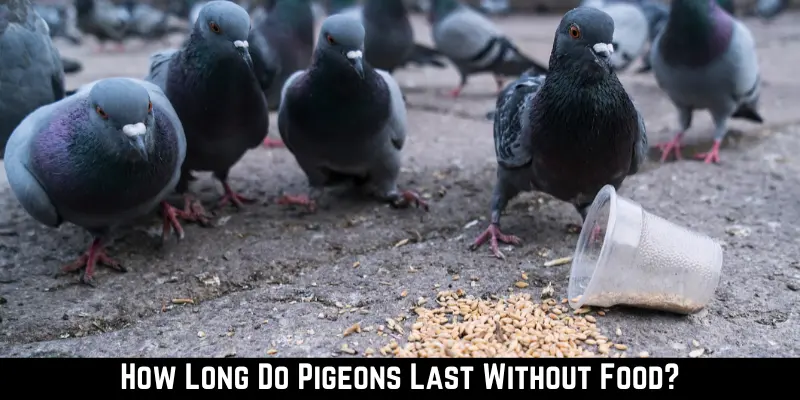Pigeons are eleven to fourteen inches in size. They are lightweight and generally weigh around four to five kg. The small size and less weight make it possible for them to get in small spaces like vents and pipes. The pigeon can get trapped inside confined and compact spaces or openings. In some scenarios, they later come out alive or, the pigeon might starve to death. Therefore, the most frequent question asked is how long do pigeons last without food?
Pigeons can last without food depending on the climate of the region in is residing. In cold weather: a pigeon can survive without food and water for up to twelve days. In hot weather: a pigeon cannot last without food for more than three days.
Pigeons are tough and sturdy; they can endure the rough climates on the planet. They are several species of pigeons. Each species of pigeon is adapted to live according to the region. The bird is smart enough to move once there is a lack of food and water in the area.

How Often Do Pigeons Need To Eat?
Pigeons eat in portions after every few hours instead of having one or two large meals. Typically, pigeons begin their day at dawn, and they will eat after every few hours.
A pigeon eats one-tenth of its body weight, approximately one ounce to three-ounce in a day. It feeds every two to four hours. A baby pigeon feeds on crop milk after every three hours. Feed a pet pigeon every two hours to keep it active and healthy.
Pigeons eat a variety of food: including grains, peas, berries, rice, bread crumbs, popcorns, and much more. Pigeons are mainly herbivores, but they can eat small insects and worms. Typically, pigeons are ground-eating birds, which means they will not eat from a bird feeder unless it is starving.
How Long Can Pigeons Live Without Food or Water?
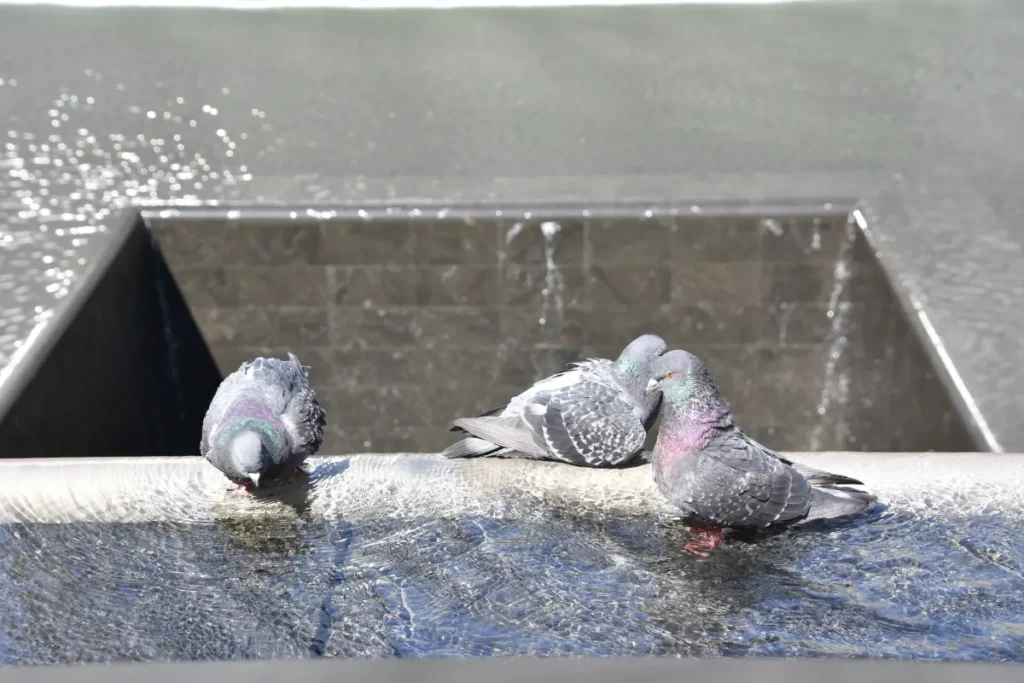
In a hot and humid climate, a pigeon can live without water for up to three days. While in a moderate temperature of thirty degrees, it can survive up to eleven days. Pigeons are exceptionally good at finding food and water resources. Compared to other birds, they can live for a long time without food and water.
It is needless to say; that pigeons cannot survive without food and water for long. They can manage without food and water for a few days but eventually die. How long the pigeon can live without food and water depends upon its weight and fat stores. Additionally, when the pigeon has a large meal, it can survive without food for the next few hours.
How Long Can a Baby Pigeon Go Without Food?
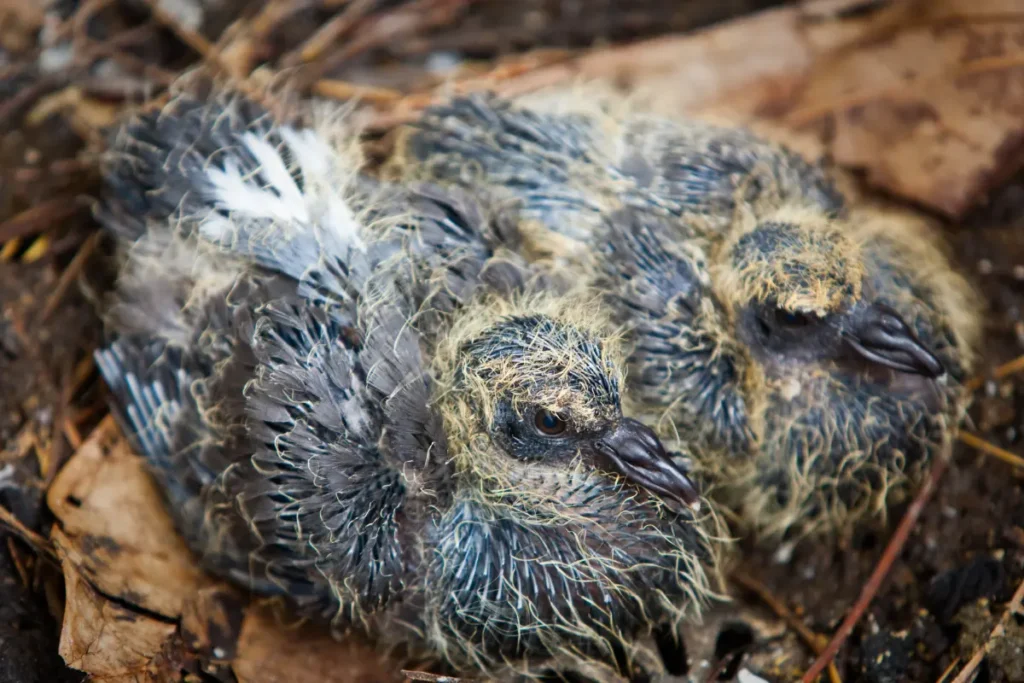
Usually, a baby bird can survive without food and water for one day or twenty-four hours. Baby birds are helpless and thoroughly dependent on their parents for a feed. Pigeons, just like mammals, nurse their squabs.
Both pigeon parents produce milk called crop milk, and they feed their young ones the crop milk for fourteen days after birth.
This milk helps in the growth of baby pigeons. If a baby pigeon is left alone and is not on the crop milk, it will die within a few days of birth.
Baby pigeon, after fourteen days of feeding: starts eating solid food similar to their parents. For 25 days to a month, a baby pigeon lives with its parents. After that, it is old enough to fly and search for food.
What To Do If A Pigeon Is Not Eating?
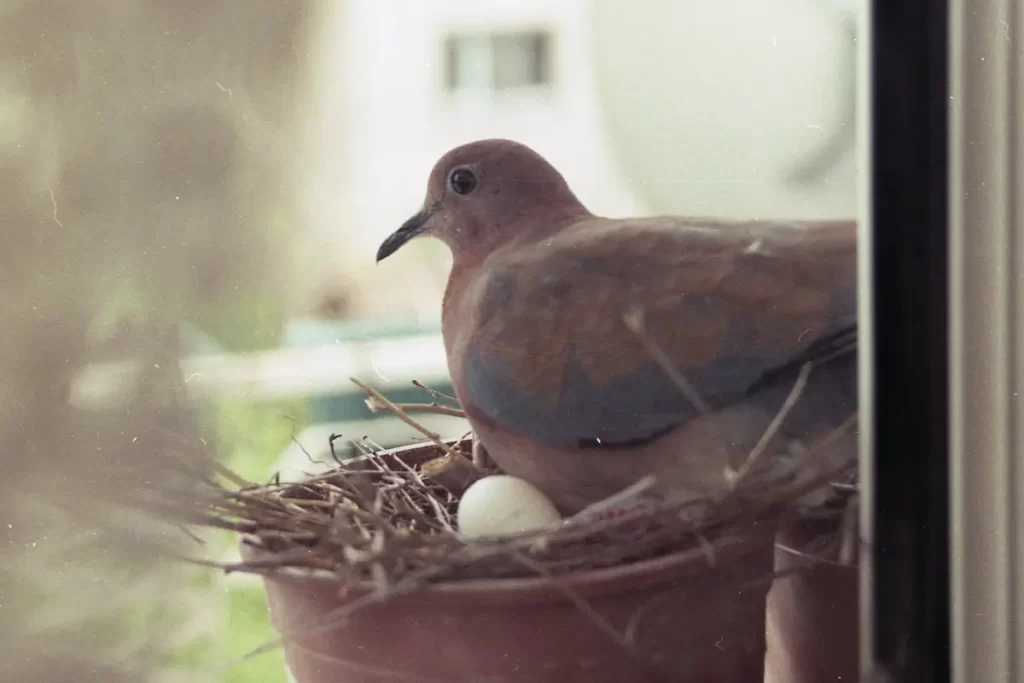
If a pigeon is not eating, it is a sign that it is sick, injured, or dehydrated. A rescued pigeon will eat or drink immediately. The first step is to make the bird warm and covered.
Never force the bird to eat or drink as it can cause death. Without any experience, you should not use a syringe or spoon to feed a pigeon because it can kill the bird.
If a baby pigeon is not eating, it can be due to several reasons number-one of which is severe anxiety. Other factors include disease and discomfort. Never feed milk to a baby pigeon.
When the pigeon is warm and in a quiet place, put some food and water in front. If it does not take anything immediately, try hand-feeding it. If a pigeon still refuses to eat: it is an alarming sign and should be taken to a vet.
How Long Does It Take a Bird To Die Without Food?
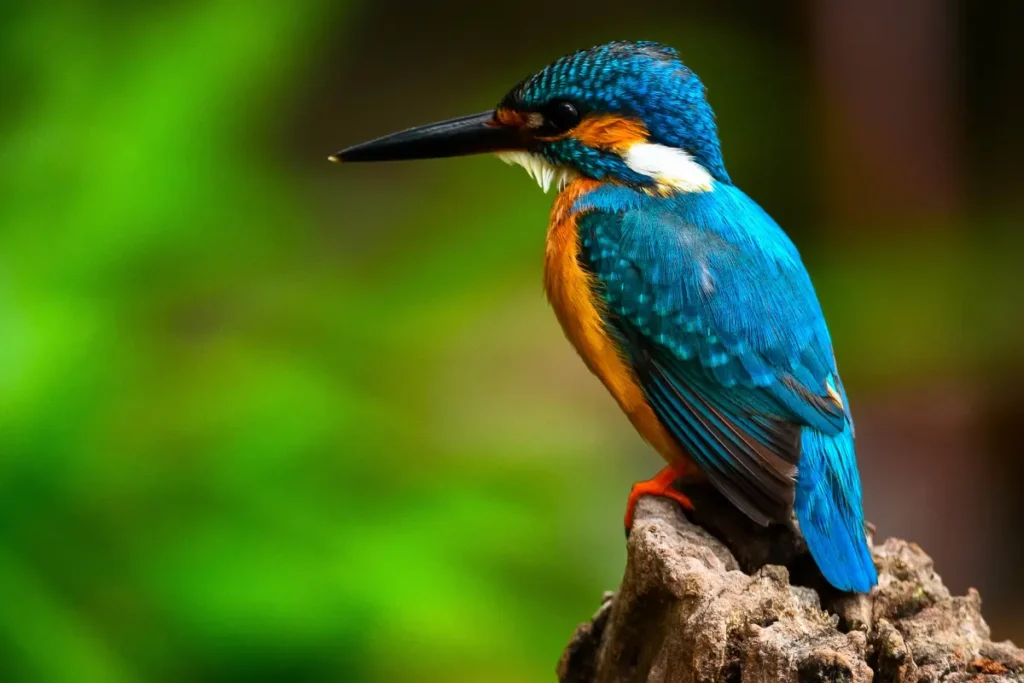
A large bird with high body fat content can last for three days without food. A small bird with less body fat content can die within twenty-four hours of not eating.
A young adult pigeon might survive for a few days without food. If it is a free bird, it will move to another place with food and water resources. However, when a pigeon is caged, it will starve to death without food within four to five days.
How Long Can Pet Pigeons Live Without Food?
A pet pigeon might survive for four to five days without food, but the depression of ignorance can kill it within two days.
Pet pigeons have a limited area, and they are under their owner. Therefore, it is necessary to provide them with food every two hours. Ignoring the pet’s needs can cause severe depression and anxiety.
Conclusion
Pigeons cannot last long without food. They are small and need to eat frequently to keep themselves active and working. Pigeons live in a warm environment with ample food supply nearby. When the weather change to extremely cold and it is difficult to find food the surrounding pigeons will move.
Pigeons can last from one day to eleven days without food, depending upon the fat storage in the body. However, a baby pigeon dependent upon its parents will die within a few hours without feeding.
When a pigeon is not eating, it indicates stress and sickness. Take the pigeon to a vet to get treatment, or else it will eventually die.
References
Do pigeons (Columba livia) use information about the absence of food appropriately– Journal of Comparative Psychology, Vol 131(4), Nov 2017, 277-289.
Hungry pigeons make suboptimLaude, J.R., Pattison, K.F. & Zentall, T.R. Hungry pigeons make suboptimal choices, less hungry pigeons do not. Psychon Bull Rev 19, 884–891 (2012).
Pigeons’ Observing Behavior and Response-Independent Food Presentations– Volume 29, Issue 2, May 1998, Pages 249-260
